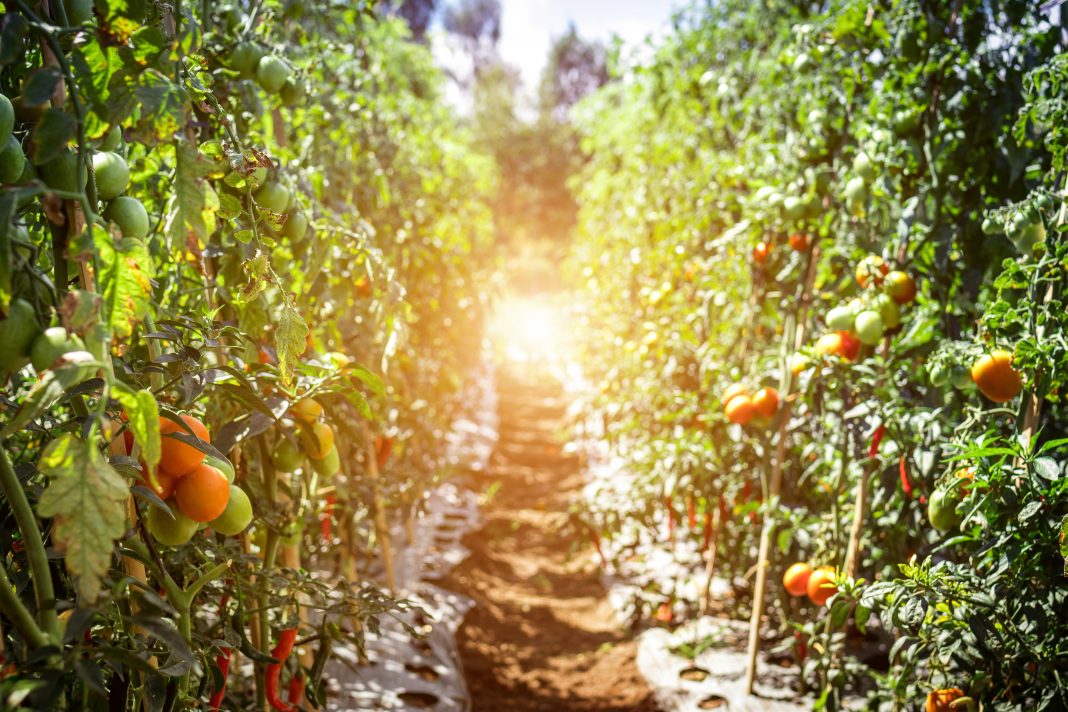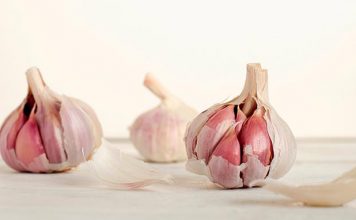 |
|
| Issue #123 • May/June, 2010 |
Tomatoes are one of the most favored of all garden crops. They originated in South America, but in the early 1500s were taken back to Italy. Today, many people believe that Italy is the true home of the tomato. It is certainly home to some very good tomato varieties.
Wherever they originated, nothing says summer quite like a thick slice of fresh tomato covering a hot-off-the-grill hamburger. During the cold months of January and February, a glass of home canned tomato juice will bring back those visions of warmer weather. The thick chunks of home canned tomatoes in your bowl of chili may just set your mind to planning your next year’s crop.
The juicy flavor of ruby red, home grown tomatoes cannot be confused with the tough, almost plastic taste of shipped-in supermarket tomatoes.
We use tremendous quantities of tomatoes canned whole, juiced, in sauces, and added to other canned foods. I can’t imagine what a year would be like if we were unable to grow the hundreds of pounds of tomatoes we put up each summer. We try to grow a few early varieties to get out first taste of ripe tomatoes in late spring or early summer. Our main crop for canning and juicing comes a bit later. We also grow a good variety of meaty paste tomato for sauces, ketchup, and salsa that saves hours of cooking down.
We usually grow Early Girl as our first crop. It is a good, dependable variety, not very large, but good for those first tomatoes of the season. We have also experimented with the variety Sub-Arctic Plenty in our little greenhouse. With this short season variety, we picked our first ripe, albeit small, tomato on June 4. We have also tried a variety called Oregon Spring with excellent results.
For our main crop we plant Better Boy, Celebrity, and Rutgers. The Rutgers has one advantage in that it is not a hybrid and some of the seed may be saved for the next year’s crop. I was raised to believe that a better tomato than Better Boy simply did not exist. Perhaps back then it didn’t, but today the Celebrity is really hard to beat. Its large, uniform size, combined with its excellent texture and taste, makes it a simply outstanding tomato. I must admit that we have relied mainly upon Celebrity for most of our canning tomatoes.
The Supersteak and other beefsteak-type tomatoes are excellent for kitchen use as well as for some preserving. These cover-the-bun varieties are good slicers and go well with burgers hot off the grill. Just be sure to use high-acid varieties if you plan on canning them, as many have been bred to be less acidic for eating out-of-hand.
Finally, we normally set out several paste tomato plants of the San Marzano variety. We have found them to be even meatier than Roma, another good pear-shaped paste type tomato. Both are excellent. These pear-shaped varieties have a high meat to juice ratio so you will not have to “cook the wallpaper off the walls” to get your sauces cooked down to a thick and usable consistency. We use the San Marzano for pizza sauce, spaghetti sauce, and my wife’s special “911 Sauce,” a hot salsa made with fiery little Thai peppers.
|
Food Value of Tomatoes
Aside from their great taste and their many culinary uses, tomatoes are also nutrient-rich. They are well known for their high vitamin C content, and also contain significant amounts of vitamins A and B, including niacin and riboflavin, and magnesium, phosphorous, and calcium. Tomatoes are also a good source of chromium, folate, and fiber.
More recently, tomatoes have been discovered to contain high amounts of a compound called lycopene. This carotenoida class of fat-soluble pigments found principally in plantsnot only helps give tomatoes their red color, but has tremendous value in fighting disease.
Studies show that lycopene is a powerful antioxidant and helps protect against a variety of cancers. It may also slow the development of cataracts and macular degeneration. Other health benefits include protecting against heart disease and helping to lower blood pressure and blood sugar. All this from a plant that was once thought to be poisonous.
Research shows that lycopene in tomatoes can be absorbed more efficiently by the body if processed into juice, sauce, paste, and ketchup, which makes foods containing tomatoes just that much more appealing.
Hybrid vs Open-pollinated
Every gardener should learn the difference between hybrid and open-pollinated plant varieties. Hybrids are cross-bred to capitalize on certain desired characteristics of their parent plants, be it size, color, texture, abundance of fruit, etc. The problem is that if you replant seed from even your best hybrid fruits or vegetables, the offspring may not display the same characteristics, but instead usually revert back to smaller, more undesirable plants and fruits. They do not “breed true” to the parent. For homesteaders, this translates into having to purchase seeds or plants of those hybrid varieties every year to ensure getting the same quality produce season after season.
On the other hand, open-pollinated fruits and vegetables display the same plant and fruit characteristics generation after generation. It is a sound horticultural practice to select some of the best of your open-pollinated produce to dry and save that seed for the next year’s planting. Not only are you helping to ensure regeneration of good seed stock, but you are taking charge of another part of your homestead independence.
This year, although I will still plant hybrids like Celebrity and Better Boy (just because I like them), I am also going to plant some open-pollinated varieties of tomatoes. I’m doing this so that I can get back into saving seed for later growing seasons. I must admit that our current economic conditions are part of the impetus to do this. We will be growing Ace, Homestead 24, and San Marzano varieties for our base crop. Each variety was chosen for its dependability and reputation.
Ace: This tomato was originally introduced by the Campbell Soup Company in 1953. It develops large vines and produces lots of firm 7 to 8-ounce tomatoes. Ace makes an excellent canning tomato. I also like the fact that it has determinate vines.
Homestead 24: This thickly-foliaged plant produces very firm, dark red, flattened globe-shaped fruit, each weighing around 7-8 ounces. They do well in hot or humid weather (which we have in abundance) and are also a good canning tomato.
San Marzano: I have been growing these for years. San Marzano is an excellent tasting Italian paste variety known for its high yields; it just keeps cranking out tomatoes. The deep red, pear-shaped fruits (3½ by 1½ inches) are solid and meaty and grow in clusters.
To Vine or Not to Vine
You will see the terms determinate and indeterminate used to describe different varieties of tomatoes. Simply put, determinate plants grow to a nice size, then pretty well stop. Indeterminate plants just keep growing and growing until frost kills them.
More officially, determinate plants quit growing once tomatoes set on the terminal or top bud of the plant. The tomatoes will generally ripen at about the same time, roughly during a two-week time period. After that, the plant will begin to dry up and die back. Some good determinate varieties include Ace, Homestead, Roma, Celebrity, and Rutgers.
Indeterminate, or vining varieties of tomatoes will keep on growing until frost. They can produce a veritable jungle of vines if allowed to do so. Be sure to have plenty of support for these plants by way of cages, stakes, or both. If you have a lot of space, consider these for your main crop of tomatoes. Some dependable indeterminate varieties include San Marzano, Amish Paste, Beefsteak, Brandywine, and Early Girl.
|
Blossom-end Rot
Blossom-end rot is a problem we encounter here in the hot, humid southwestern Indiana summers. The malady can become serious and cause a lot of loss for the homestead gardener. It is characterized by a large, black, sunken-in spot at the bottom or blossom-end of the tomato. I used to think I could solve the problem by caging all the tomatoes and getting the plants up off the ground, but I’ve learned that the condition is caused, in part, by low calcium levels in the plant. I mentioned that it is often a problem where I live, because blossom-end rot is often prevalent where prolonged dry conditions are followed by periods of heavy rains. Those moisture fluctuations reduce the ability of the tomato plant to take in and distribute calcium in the plant itself and in the fruit.
Here are some ideas to help control and prevent blossom-end rot:
• Keep the soil pH between 6.2 and 6.8 and have plenty of calcium available in the soil by supplementing with dolomitic limestone or gypsum.
• Mulch! I am long a disciple of deep mulch throughout the garden. This will help keep moisture levels more even throughout the growing season.
• Go easy on the nitrogen. Normally considered a plant wonder-food, too much can cause insufficient calcium absorbtion.
Grow Your Own
Tomato seeds can be started in just about any type of container. We have used yogurt cups, commercial planting flats, and cheap foam drink cups to start our seed in. If using yogurt cups or foam cups, be sure to poke a hole or two in the bottom of each one to allow for drainage. With the foam cups, I merely used a long stiff #9 wire and shoved it down through a stack of cups a couple of times. That took care of a dozen or so cups at once. With the harder plastic yogurt cups, I used a drill and a small bit and did half a dozen at a time.
When germinating tomato seeds, good bottom heat is critical. Plant the seeds in your containers of choice, cover them with about a half-inch of soil, and water them. I often plant the tomato seeds in shallow trays and transplant them once they develop their second set of leaves. I gently lift each plant from the starter soil using an old dinner fork, pinch off the first set of leaves on the baby plant, and set it in a cup of soil that covers the leaf stubs. Next, I gently water the newly moved plants and move them to a site with reduced bottom heat.
If you have been growing your new tomato plants in a hotbed or greenhouse, they will need to be “hardened off” before they are transplanted into the garden. This simply involves moving them into a cold frame or otherwise slowly introducing them to the fluctuating temperatures they will experience in the garden. Allow them to acclimate for a few days up to a week, then transplant them as usual.
Once the first hint of spring arrives, I start to get antsy to plant stuff. Along with my other seeds, I often get my tomato seeds planted too early. As a result of less than ideal light and temperatures, I sometimes end up with tall and leggy tomato plants.
If this happens to you, or if you buy plants that have been at the greenhouse or garden supply store just a bit too long, don’t worry. Tomato plants that have become tall and spindly can be put into the ground and will bear just as heavily as any other plant.
To transplant these spindly plants, most gardeners simply dig a deeper hole and bury the plant up to its neck. The method I have grown to prefer over the past 30 years or so is to dig a hole the same transplant depth as you normally would, but make it long enough to accommodate the section of plant that you want to cover in addition to its root mass. Pinch off any leaves that will be covered by the soil, then simply lay the plant in the hole on its side at a slight upward angle, cover with soil, and give it a good watering.
Tomato plants are able to develop roots along their stem, so this provides a greater area for the plant to develop a root system. The plant can also take advantage of the shallower, warmer soil. Within a few weeks of planting the tomato in this sideways fashion it will begin to stretch upward towards the sun and will soon be nearly as erect as a normal transplant.
Another tip I’ll offer is this: Try to set your garden plants out in the late afternoon or evening. This will help to prevent crusting over of freshly watered soil around the plant that often occurs if the plant is set out in the hot afternoon sun. After I transplant the tomatoes I give the soil around them a good soaking to settle the soil around the roots, then I scratch a bit of loose soil up around the plant to help support the plant and prevent crusting.
If you have to purchase your tomato plants, buy the younger looking, greenest, most compact plants you can find. Try to avoid plants that have already begun to bloom. Your transplants need to spend energy growing roots, not blooms.
A time-tested method of getting tomato plants off to an early start is to set an ordinary round clay flue tile around each plant. The reddish color combined with the mass of the tile absorbs a great deal of sun-generated heat during the cool spring days. The tile releases the heat throughout the cool nights. Our Amish neighbors use this method regularly and always have an early crop of tomatoes. On some really cold nights, you might want to put a piece of glass or plastic over the top. Just be sure not to leave a covering over the tile during the day, as it can heat up quickly and bake the tender young plant inside. These red clay tiles are available at concrete supply outlets and construction material stores.
You can also use milk jugs or 2-liter soda bottles to make a mini-greenhouse for your plants. Simply remove the cap and cut the bottom out of the jug. Set it down over the plant and anchor it with a long J-shaped wire hooked over the lip of the jug and shoved into the ground. The absence of the cap will allow heat to escape during the day and prevent overheating. I have also seen folks who simply wrap clear plastic around tomato cages set around their plants. The plastic is taped or clipped in place with clothes pins, and on really frosty nights a piece is clipped over the top. The cages are left in place as the plants mature and the plastic is removed once nightly temperatures warm up.
All of these methods will help you get a jump on the season and win that “first tomato of the year” contest with your friends.
Stakes and Cages
I am a firm believer in getting the tomato plants up off the ground by means of staking or caging as soon as they are established. For staking, I have used wooden edging strips from the local sawmill and T-posts normally used for fencing. I still see a lot of gardeners who use stakes and wide strips of torn cloth to tie up and support the plants.
For cages, I’ve used cylinders of concrete reinforcement wire (it has the benefit of being quite tall) and 1×2 welded wire, but now I almost exclusively use plain old woven field fencing. I keep a dozen or two cylinders made up of used woven fence wire ready to use in the garden. The support allows the plant to grow much more upright, and the resulting fruit develops more evenly and with fewer blemishes and bad spots. The air circulates better around the plant and generally promotes a good healthy plant. The cages make it much easier to pick the ripe tomatoes as well.
Simply cut a length of fencing or concrete wire to make a cylinder about 20-24 inches in diameter. About a six-foot length will work. When you cut the wire, leave some of the ends protruding a few inches so that as you bend the piece into a cylinder shape, you will have some wire to wrap around and secure it. It’s all pretty simple, and after one or two, you’ll be turning them out pretty quickly.
After the plants are well-established, I go through the patch and cultivate it well. I carefully pull any weeds sprouting close to the tomato plants and then use the hoe to pull up a good bunch of soil all around the plant. Next, I take one of the fence wire cylinders, place it over the plant, and work it back and forth down into the loose soil. Finally, I drive a rod-type electric fence post into the soil right up against the wire cylinder and tie the wire cage to the post with a piece of twine. This keeps the cage secured in place.
Mulch
If there was only one single hint about gardening that I could pass on to ensure your gardening success, it would be just this one wordmulch! I don’t believe that there is any one gardening practice that can transform an average garden into an excellent one than good and abundant mulching. That goes not only for tomatoes, but also for the whole garden. Best of all, it costs nothing, or at least very little. A thick blanket of mulch can be the difference between a successful garden and a parched and weed-choked one.
We apply one or two thicknesses of newspapers, and then add a thick mulch of straw. The covering not only keeps weeds down, but retains moisture as well.
Here’s a word of caution, though: Don’t mulch too early. Let the soil warm up well before adding the thick layers of straw. Mulch can also hold in the coolness and prevent the soil from warming. A couple of years ago we mulched too early and lost several tomato plants that way. But once the soil is warmed, and the new plant established, nothing can beat a good thick blanket of mulch. If it sounds like a lot of work to put it down, remember that it will save you hours and hours of weeding and possibly watering later on.
|
Tomato Pests
For four-footed pests, the best repellent is a good homestead dog. ‘Possums and ‘coons will eat tomatoes, but they don’t seem to be a big problem.
In our area, Eastern box turtles will eat some tomatoes. They can damage several nice ripe tomatoes overnight. We solved that problem by keeping the fruit up off the ground and out of their reach in the tomato cages.
Deer will eat both the plant and the ripe fruit. The dog remedy works well with deer. Some gardeners scatter barbershop clippings as a repellent. Others report that a bar of Irish Spring soap hanging in the garden will repel deer.
You definitely will need to keep the chickens out of the tomato patch. I keep them out with a tight fence around the garden. They won’t try hard to get in, but if they are able to get in, they will peck at a lot of fruit.
One voracious insect pest is the larva of the Hawk Moth, known as the Tomato Hornworm. These jumbo crawlers will grow to about three inches long and three quarters of an inch in diameter. They can appear and nearly strip a tomato plant in pretty short order. The best method for control is to hand pick and squash them. They do their best to remain unseen, as they are nearly the exact color of the tomato plant itself. However, once they begin ravaging your plants, you’ll be determined to find the critters. If you see one of the worms with what looks like grains of rice all over it, don’t destroy it. The white bits are actually the tiny cocoons of the Braconid Wasp and are killing the worm for you. They will hatch and take off to find other Hornworms as well.
The Fruits of Your Labor
Freshly picked tomatoes can be placed on a table or other platform to check them for blemishes or rotten spots. I place each one top-down on a table to help keep from bruising the blossom end of the fruit.
We love canned whole tomatoes, tomato juice, sauce, and salsa, and use them throughout the year.
Consult a good canning guide before preserving your tomatoes. You can order Jackie Clay’s canning book, Growing and Canning Your Own Food on page 95 or the Ball Complete Book of Home Preserving on page 96. Some other good books are Stocking Up and The Ball Blue Book.
I also recommend picking up a Foley Food Mill or a Squeezo or Victorio-type tomato strainer. These devices will save hours of labor when processing lots of tomatoes. Check yard sales, flea markets, or order a new one. You will be glad you found one when you do.
If you use plain old bright red tomatoes, the acid content should be high enough to can them using a boiling water bath. If canning low-acid tomatoes, the addition of lemon juice or other acid is necessary to prevent spoilage. Consult your canning guide for more thorough information on canning low-acid tomatoes. In addition to canned whole tomatoes, my wife enjoys putting up plenty of tomato juice to enjoy during the winter.
We have also dried slices of meaty San Marzano tomatoes in our homemade food dryer. We use these dried slices on top of homemade pizzas. Delicious!
Recipes
911 Sauce:
This is my wife’s infamous “911 Sauce” made using lots of fiery hot Thai peppers. Beware! This stuff is delightfully dangerous.
2 Tbsp. olive oil
½ cup onions, chopped fine
½ cup celery, minced
2 Tbsp. red or green sweet peppers, minced
3 Tbsp. Thai hot peppers, minced
1 clove garlic, chopped fine
4 medium tomatoes, chopped
2 Tbsp. lemon juice
1 tsp. honey
½ tsp. dried basil
¼ tsp. dried coriander
¼ tsp. cumin seeds
¼ tsp. chili powder
In a large skillet, heat the oil. Add the onions, celery, sweet and hot peppers, and garlic. Cook for 5 minutes, stirring occasionally. Stir in the tomatoes, lemon juice, honey, basil, coriander, cumin seeds, and chili powder. Bring to a boil. Reduce heat to low, cover and simmer for 20 minutes. Makes about 5 half-pints.
Tomato Juice Cocktail:
This is a variation of the popular commercial vegetable drink. Ours is just as good and nutritious. This recipe comes from our old, beat up and juice stained copy of Stocking Up.
12 large, ripe tomatoes
4 medium-sized carrots
2 large sweet green or red peppers
4 celery stalks, diced, leaves included
2 onions, diced
1 garlic clove, minced
¼ cup lemon juice
2 Tbsp. honey
1 Tbsp. salt
½ tsp. black pepper
2 bay leaves
2 sprigs fresh basil, dill, or thyme
Wash tomatoes and remove stems and cores; cut into small pieces. Scrub and grate the carrots. Core, seed, and mince the peppers.
Combine all ingredients in a large stainless steel or enamel kettle and simmer over low heat for 45 to 50 minutes, stirring occasionally, until the vegetables are soft. Pick out the herbs. Strain through a sieve.
To can, return the strained juice to the kettle and bring to a boil. Pour hot juice into hot jars, leaving ½-inch headspace. Adjust lids and process quarts for 30 minutes at 10 pounds pressure. Makes about 4 quarts.
Spaghetti Sauce:
This too, is a veteran recipe from our Stocking Up book that we have used for years. It makes a great sauce for spaghetti and other pasta.
5 lbs. plum tomatoes
2 Tbsp. olive oil
2 onions, chopped
4 garlic cloves, crushed
5 Tbsp. green pepper, chopped
2 tsp. basil or oregano
1 bay leaf
salt and pepper to taste
water or red wine
¼ cup lemon juice
Loosen the tomato skins by plunging them into boiling water for a minute, then under cold running water. Remove the skins and cut the tomatoes into chunks.
Heat the oil in a large, heavy enamel or stainless steel kettle and sauté the onions and garlic. Stir in the pepper and tomatoes, add the spices and seasonings, and simmer for an hour or longer, stirring occasionally. If it boils down too much, add some water or wine, then add the lemon juice.
Pour hot spaghetti sauce into hot jars, leaving ½ inch headspace, and process in a boiling water bath for 45 minutes. Makes 4-6 pints.


















Here is my shortcut tip for making tomato sauce. scald and peel tomatoes as usual. Put thru a vitamix or blender and strain out seeds. Put the fresh tomato juice in sterile gallon glass jars. Let set for a few hours until it separates. Siphon off the tomato water and freeze it to use in making soups, stews–or even for making tomato wine if you have a lot of it. What remains will be the tomato sauce. Season (salt, pepper, sweetener, lemon juice or vinegar to acidify), reheat the tomato sauce to boiling and cook for a few minutes before filling jars and water bathing.